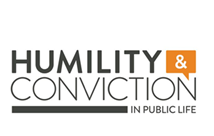The Lies They Tell Us: Facing Up to the UK’s Ignorance of Racial Oppression
28 December 2020
In May 2019, I travelled to UWE Bristol, to speak at the Critical Theory and Feminism Conference. Having arrived a day before I was scheduled to give my paper, I decided to take advantage of the time on my hands to explore the city – not least because it was my first time in Bristol. Being a sucker for parks, I decided to head first to St. Peter’s Church via Newgate, and take in the view from the Castle Park Landing.
While I was on Newgate, I walked past a car park. Now, at this point, you might well wonder would I mention such a banal detail, to the extent that you might fear I am coming up with a new Alan Partridge skit – ‘That’s a glorious spot for my Rover 800, Lynne. Jurassic Park!’. However, as innocuous the Galleries Car Park is – after all, it’s not designed by Zaha Hadid – there was a plaque on the wall that immediately arrested my attention:
Unauthorised Heritage
BRISTOL – Capital of the Atlantic Slave Trade 1730-1745
This commemorates the 12,000,000 enslaved of whom 6,000,000 died as captives
[A black and gold version of the English Heritage logo]

I must have stared at that plaque for at least 10 minutes before resuming my self-directed tour of Bristol. The effect of that plaque was very powerful, and I found myself invariably shuddering and feeling sick when I ventured into Queen Square. Not only did my experience in Queen Square reinforce the basic phenomenological point that the urban environment has deeply affective properties, but thinking about the plaque while being visually assaulted with all the colonial architecture and symbolic + material valorisation of monarchy forced me to conclude the following: everything ‘civilised’ in this square is built on the legacy of centuries of colonial abuse and imperial savagery. The mythopoetic contention that the UK’s historical success is predicated on plucky British gumption is, frankly, bullshit.
No one does false consciousness better than the UK. Though we tend to follow the US in pretty much every single way (ironic given Britannia is supposed to rule the waves – Brexit, baby!), it would not be unreasonable to contend that, in one particular domain, the UK leaves its trans-Atlantic cousin in its wake: the American Republic (est. 1776) cannot compete with how the UK monarchy and its institutions have honed a centuries-old practice of ideological myth-making. Cue the Chuck Norris ‘thumbs-up’ to us plucky and resourceful Brits, who stood alone against the Hun, and are now no longer vassal states of the Galactic Empire, AKA: the European Union.
When the statue of the slaver Edward Colston was pulled down in Bristol, where activists for many years have been alerting people to colonial abuses and the stench of empire, a significant debate about removing statues in the UK restarted. Boris Johnson’s contribution to the debate – and I use ‘contribution’ in the loosest possible sense, given the Prime Minister’s discursive sophistication – was to say that removing statues is to “lie about our history. We cannot try to edit or censor our past. We cannot pretend to have a different history”.
As is customary with pathetic Periclean populists, not only does Johnson misunderstand the function of aiming to remove statues of slavers and the like and place them in museums, he displays remarkable hypocrisy, to such an extent that he is practically gaslighting. If there is one thing the UK has done so successfully over centuries, it is routinely editing out, erasing, and rendering invisible its historical abuses as a colonial and imperial hegemon, where these abuses are central for the UK’s historical economic prestige and status as a ‘developed’ state.
The UK is world-leading in cultivation and reproduction of ignorance – specifically, the UK is a global front-runner in ensuring that certain records, databases, archives, memories, and voices never see the light of day, let alone enter the second and tertiary education curricula. What’s ‘great’ about Great Britain is the ‘greatness’ of white ignorance here. Two extremely helpful articulations of white ignorance are by Shannon Sullivan and Nancy Tuana, and by Stanley Cohen:
Especially in the case of racial oppression, a lack of knowledge or an unlearning of something previously known often is actively produced for purposes of domination and exploitation. At times this takes the form of those in the centre refusing to allow the marginalised to know: witness the nineteenth-century prohibition against black slaves’ literacy. Other times it can take the form of the centre’s own ignorance of injustice, cruelty, and suffering, such as contemporary white people’s obliviousness to racism and white domination. Sometimes these “unknowledges” are consciously produced, while at other times they are unconsciously generated and supported. (Sullivan and Tuana 2007: 1)
Besides collective denials of the past (such as brutalities against indigenous peoples), people may be encouraged to act as if they don’t know about the present. Whole societies are based on forms of cruelty, discrimination, repression or exclusion which are “known” about but never openly acknowledged … Indeed, distortions and self-delusions are most often synchronised … Whole societies have mentioned and unmentionable rules about what should not be openly talked about. You are subject to a rule about obeying these rules, but bound also by a meta-rule which dictates that you deny your knowledge of the original rule” (Cohen 2001: 10-11; 45)
Even though, or in fact, precisely because white people tend not to understand the racist world in which they live, since countries like the UK ensure knowledge of racial abuse is either erased or mythologically re-packaged, white privilege is entrenched, insofar are white people symbolically and materially benefit from racially-structured economies and institutions. The careful and deliberate management of historical memory – most explicitly evidenced by memorialisation and statues – and the long-standing proficiency in motivated ignorance are the principal practices of racist states and institutions. To take three examples here.
(A) Belgium engaged in ‘The Great Forgetting’, to use Adam Hochschild’s expression, which involved (a) the Leopold II state-sponsored systematic destruction of archives in Brussels (via an 8-day long fire); and (b) the Brussels Royal Museum of Central Africa’s deliberate forgetting that millions of Congolese were enslaved, kidnapped, murdered, raped, and tortured. For example, colonial administrators oversaw forced amputation as ‘normal’ punishment for Congolese when quotas for Leopold II were not met. Emissaries of light? Bringing civilisation and enlightenment to a dark and feral continent? Anything but. Such is the terrifying extent of motivated ignorance here that the Belgian ambassador to West Africa in the 1970s, upon reading a Liberian newspaper article on the genocide by the Belgian colonists, deemed the article libellous. However, when he discovered the historical facts and the truth, he went on record to say that he “learned that there had been this huge campaign, in the international press, from 1900 to 1910; millions of people had died, but we Belgians knew absolutely nothing about it” (cited in Hochshild (1998)).
(B) In the US, to quote Kirk Savage (1994: 143), the commemoration of the Civil War “in physical memorials is ultimately a story of systematic cultural repression … Public monuments … impose a permanent memory on the very landscape within which we order our lives. Inasmuch as the monuments make credible particular collectivities, they must erase others”. This is a central feature of practices of ignorance, and reconfirms that the presence of statues of Robert E. Lee and the absence of statues commemorating African Americans in the American Civil War reveals structural racism in the US. More recently, there has been a concerted struggle to ensure that the 1921 Tulsa Race Massacre is named precisely as a massacre, rather than as a ‘riot’. Words matter, and the difference between calling an event a ‘riot’ and calling that same event a ‘massacre’ is significant. Crucially, what is driving work to label the atrocity for what it was – a massacre, not a riot – is the memory of the black community, which has kept history and the truth alive.
(C) In a response to the decolonial narratives and efforts of the Kikuyu people in 1950s, the UK built concentration camps in Kenya for over 1,000,000 people. Frighteningly, as if this was not despicable enough, one such concentration camp had ‘Labour and Freedom’ – the Auschwitz ‘motto’ – branded on its gate. The nauseating violence committed by the British colonial authorities – from castration to anal raping with weapons – is revealed in archives, secret memos, and correspondence hidden from institutional and public view until 2012. That year, a group of Kikuyu survivors sued the UK government for committing acts of torture. In the same period, parts of a secret Foreign & Commonwealth Office archive, one which the colonial administrators mostly destroyed, was discovered: the archive reveals the extent to which the colonial authorities distorted facts and perverted the truth, namely by lying about the cause of prisoner deaths, and deliberately portraying victims as ‘criminals’ (and therefore threats to public order and decency). While all the mutilation and defamation is being carried out, while all the efforts to misrecognise and non-recognise prisoners are in full force, Harold McMillan proclaims to plucky Brits at home ‘You’ve never had it so good’, and you can hear the English roar at the Royal Albert Hall on the last night of the Proms, “Britons, never, never shall be slaves!”. Britain’s epistemic (as well moral and political) barbarity towards black people shows little sign of halting, as the disembarkation cards of the Windrush generation were all destroyed by the Home Office during Theresa May’s tenure as the Secretary of State.
I want to conclude with some thoughts about #Black Lives Matter and wilful ignorance. The Black Lives Matter movement is borne out of distress at systemically reproduced institutional racism and police brutality. Tragically and all too prevalent in the US (and the UK), such distress is often dismissed, to the extent that the vocabulary of protest against racial oppression is viciously misrecognised by conservative ideologues to the point of erasure. As Robert Gooding-Williams writes, the conservative view is “a failure to regard the speech or actions of black people as manifesting thoughtful judgements about issues that concern all members of the political community” (Gooding-Williams 2006: 14).
As part of the effort to explicitly challenge the reactionary frameworks which construe peaceful anti-racist protestors as public threats, Black Lives Matter demonstrations typically involve the chants ‘Hands Up, Don’t Shoot!’, where marchers raise their hands above their heads while chanting. To quote José Medina here, “[t]his slogan performatively challenges the misplaced presumption that demonstrators pose a threat to public order, interrogating the underlying narratives that depict them as such a threat, while invoking alternative images of peaceful expressions of group agency” (Medina 2018: 12). Furthermore, the chants ‘Whose streets? Our streets!’ and ‘No Justice, No Peace!’ are deliberately misinterpreted and misrecognised by reactionary groups to imply that the basic progressive claim ‘Black Lives Matter’ is equivalent to ‘Black Lives Matter More than White Lives’. Crucially, this forms a significant part of the explanation for why #AllLivesMatter is in fact reactionary, since #AllLivesMatter reveals itself as either wilfully or non-wilfully ignorant of structural racism and systemic misrecognition.
Black and indigenous testimony are denied epistemic significance, not because black and indigenous testimony are unreliable, non-authoritative, lacking in precision, clarity and rigour. On the contrary, black and indigenous testimony are denied epistemic significance, to the extent that black and indigenous testimony are non-recognised and actively suppressed, because their words, their experiences, their memories are a source of not just epistemic virtue, but radical political power: black and indigenous testimony reveals with precision, clarity and rigour the long-standing intersectional abuses produced and currently reproduced by white supremacy and white ignorance.
Black and indigenous testimony are denied epistemic significance, because black and indigenous testimony unmask the myth of modernity and Enlightened Western European civilisation. In terms of discursive formations, the “savage” is not the person of colour; it is the white supremacist and any individual, group, or institution complicit in white supremacy. The savage is the colonial administrator who says “if we are going to sin, we must sin quietly”. The savage is the person who remains wilfully ignorant.
And so, to Boris Johnson, removing the statues is anything but lying about our history. It is facing up to the truth about the UK. It is unmasking the UK for what it is: a monarchy whose success was built on and sustained by the oppression and degradation of people of colour.
Picture: Delete Key by @Ujesh on Unsplash
- October 2025
- September 2025
- August 2025
- July 2025
- June 2025
- May 2025
- April 2025
- March 2025
- February 2025
- January 2025
- December 2024
- November 2024
- October 2024
- September 2024
- August 2024
- July 2024
- June 2024
- May 2024
- April 2024
- March 2024
- February 2024
- January 2024
- December 2023
- November 2023
- October 2023
- September 2023
- August 2023
- July 2023
- June 2023
- May 2023
- April 2023
- March 2023
- February 2023
- January 2023
- December 2022
- November 2022
- October 2022
- September 2022
- August 2022
- July 2022
- June 2022
- May 2022
- April 2022
- March 2022
- February 2022
- January 2022
- December 2021
- November 2021
- October 2021
- September 2021
- August 2021
- July 2021
- June 2021
- May 2021
- April 2021
- March 2021
- February 2021
- January 2021
- December 2020
- November 2020
- October 2020
- September 2020
- August 2020
- July 2020
- June 2020
- May 2020
- April 2020
- March 2020
- February 2020
- January 2020
- December 2019
- November 2019
- October 2019
- September 2019
- August 2019
- July 2019
- June 2019
- May 2019
- April 2019
- March 2019
- February 2019
- January 2019
- December 2018
- November 2018
- October 2018
- September 2018
- August 2018
- July 2018
- June 2018
- May 2018
- April 2018
- March 2018
- February 2018
- January 2018
- December 2017
- November 2017
- October 2017
- September 2017
- August 2017
- July 2017
- June 2017
- May 2017

